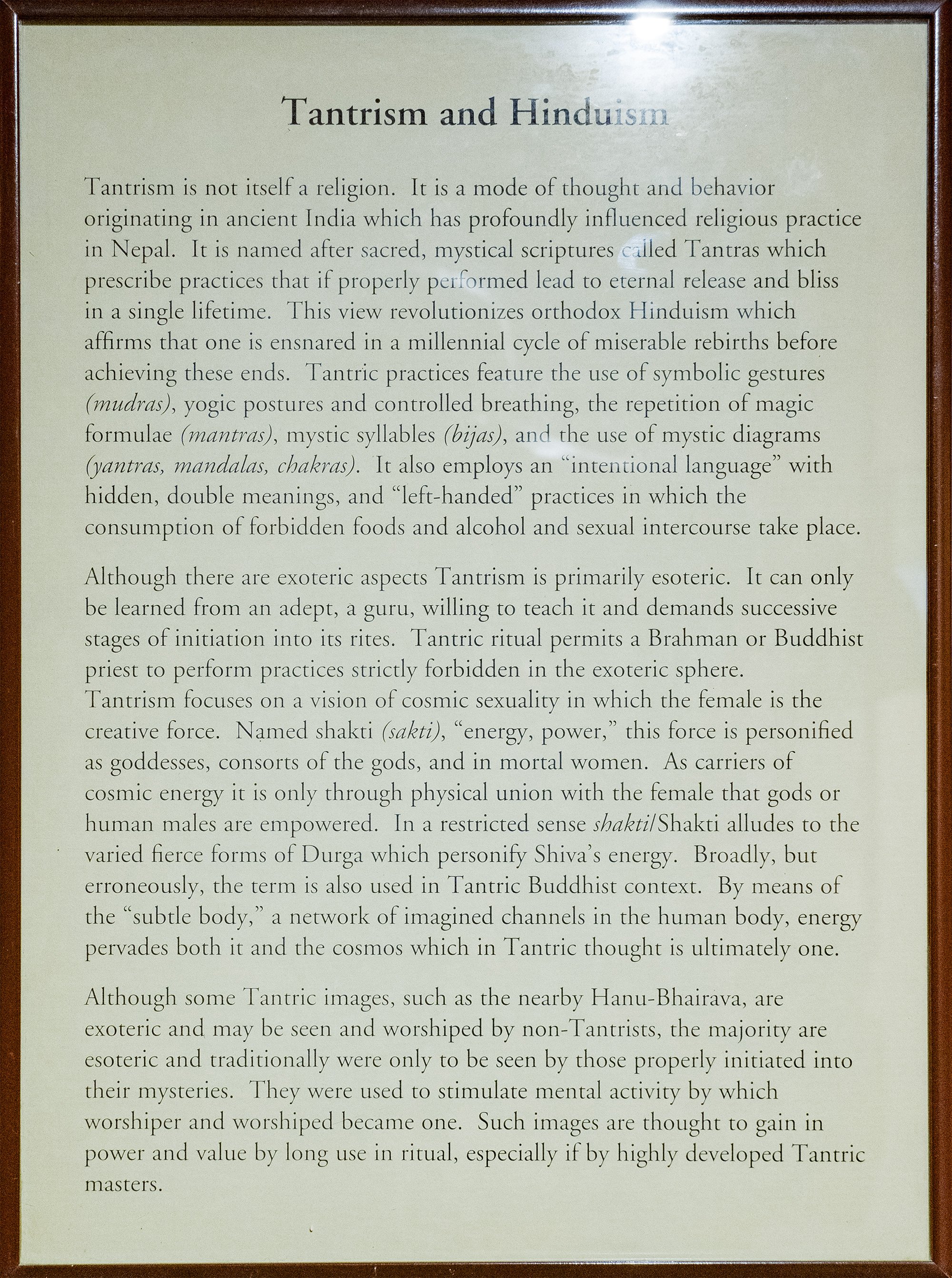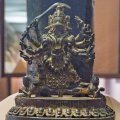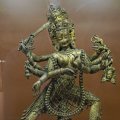Patan Museum (Nepal): photo 200
Photo 200 of 212 in Gallery: Patan Museum (Nepal)

Image title: Tantrism (Tantra) and Hinduism
Description of the photo
Tantrism and Hinduism—Tantrism is not itself a religion. It is a mode of thought and behavior originating in ancient India which has profoundly influenced religious practice in Nepal. It is named after sacred, mystical scriptures called Tantras which prescribe practices that if properly performed lead to eternal release and bliss in a single lifetime. This view revolutionizes orthodox Hinduism which affirms that one is ensnared in a millennial cycle of miserable rebirths before achieving these ends. Tantric practices feature the use of symbolic gestures (mudras), yogic postures and controlled breathing, the repetition of magic formulae (mantras), mystic syllables (bijas), and the use of mystic diagrams (yantras, mandalas, cakras/chakras). It also employs an “intentional language” with hidden, double meanings, and “left-handed” practices in which the consumption of forbidden foods and alcohol and sexual intercourse take place.
Although there are exoteric aspects Tantrism is primarily esoteric. It can only be learned from an adept, a Guru, willing to teach it and demands successive stages of initiation into its rites. Tantric ritual permits a Brahman or Buddhist priest to perform practices strictly forbidden in the exoteric sphere.
Tantrism focuses on a vision of cosmic sexuality in which the female is the creative force. Named shakti (sakti), “energy, power,” this force is personified as goddesses, consorts of the gods, and in mortal women. As carriers of cosmic energy it is only through physical union with the female that gods or human males are empowered. In a restricted sense Shakti alludes to the varied fierce forms of Durga which personify Shiva’s energy. Broadly, but erroneously, the term is also used in Tantric Buddhist context. By means of the “subtle body,” a network of imagined channels in the human body, energy pervades both it and the cosmos which in Tantric thought is ultimately one.
Although some Tantric images, such as the nearby Hanu-Bhairava, are exoteric and may be seen and worshiped by non-Tantrists, the majority are esoteric and traditionally were only to be seen by those properly initiated into their mysteries. They were used to stimulate mental activity by which worshiper and worshiped became one. Such images are thought to gain in power and value by long use in ritual, especially if by highly developed Tantric masters.
Gallery information:
The Patan Museum is located on the Durbar square of Patan (Lalitpur/Lalitapura, Kathmandu, Nepal) which is associated Keshav Narayan Chowk (Keshavnarayan)—a form of Lord Vishnu. Being listed as a World Heritage Site, the whole of Durbar square is filled with exquisite temples, sculptures and other ancient structures, of which the ancient history history can be traced to the Malla Kings of Lalitpur. It is an important site for both Buddhism and Hinduism.
Photo details:
Date: 2019-12-02
Camera: SONY ILCE-6400
Exposure: 1/160
Aperture: f/4.5
ISO: 2000
Focal length: 29mm
High resolution:
Download file
Size: 2.93 MB
Resolution: 2000 x 2684
© Photograph by Gabe Hiemstra.
License: CC BY-NC-ND 4.0

